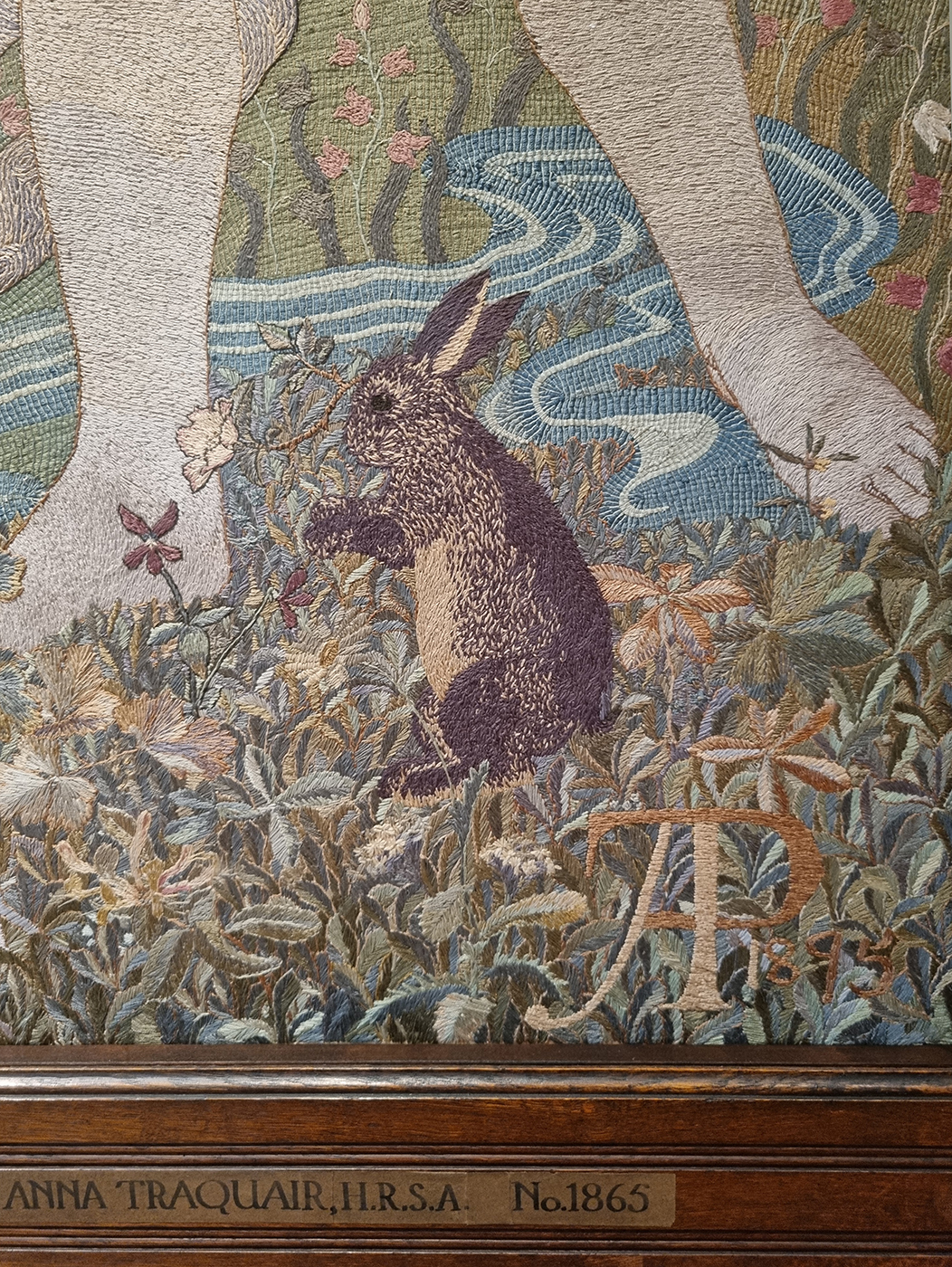The Scottish Gallery Directors – Christina Jansen, Tommy Zyw, Kirsty Sumerling and Guy Peploe choose one work each to highlight the magnificent new spaces at the National Gallery of Scotland which covers Scottish art from 1800-1945. Christina Jansen and Guy Peploe can also be heard on the NGS audio guide discussing the work of William Johnstone (1897-1981), S. J. Peploe (1871-1935) and Anne Redpath (1895-1965).
Continue reading for insights, audio recordings and more…
Christina Jansen selects William Johnstone
‘I think the new galleries are a triumph; the connecting spaces brings the nations collection to life. The large windows allows our beautiful capital city to play an integral part of the overall presentation and adds to the drama and colour.
A Point in Time, painted 1927-1935 by William Johnstone (1897-1981) is the first epic painting you will be confronted by in the new Scottish wing. I am delighted that this artist has such a strong presence in the new galleries (1800-1945).
What do you see? I see eyes, a figure, a landscape and something moving and shifting – this is a painting of extraordinary power and presence. William Johnstone is one of the most enigmatic figures in Scottish art. He was an outstanding, revolutionary art educator and visionary painter.’ – Christina Jansen
You can listen to Christina discussing A Point in Time on the National Galleries’ new website here.
Tommy Zyw selects William McTaggart
‘William McTaggart (1835-1910) has been hung within a bespoke new gallery within the new Scottish wing of the National Galleries of Scotland. His celebrated seascapes, which capture the energy and drama of raging seas, heralded a new expressive engagement with the transient qualities of the Scottish weather and landscape. Working en plein air, he developed a unique impressionist-like approach, best suited to capture the fleeting effect of light on moving water.
McTaggart was born the son of a Crofter near Campbeltown on the Kintyre peninsula and an interest in the sea, and of man’s interaction with the landscape, were themes which defined his career. He was a longtime exhibitor with The Scottish Gallery, forming a close bond with the then managing director Peter McComish Dott. Dott later entered a commercial relationship with the Glasgow dealer Alexander Reid (famously painted by Vincent Van Gogh), to share the cost and proceeds of all of McTaggart’s sales, allowing McTaggart to focus fully on his painting practice. McTaggart is buried in Newington Cemetery in Edinburgh.’ – Tommy Zyw

Kirsty Sumerling selects Phoebe Anna Traquair
‘A champion of the Arts and Crafts movement, Phoebe Anna Traquair’s (1852-1936) talents were vast excelling in: painting, enamelling, murals, embroidery and site-specific work. The latter is championed in the new gallery at the National where you can see examples of her murals for the Royal Hospital for Sick Children in Edinburgh, For So He Giveth His Beloved Sleep, and a suite of four embroidered panels which follow the journey of the human soul to heaven, The Progress of a Soul; The Entrance. The panels are exquisitely embroidered in silk and gold thread on linen, depicting scenes of hope and innocence when the soul is in tune with nature and ignorant to the realities of life. Traquair has deftly captured intricate details amongst the flora and fauna- a rabbit appears from the undergrowth unperturbed by the human figure and perfectly at ease.’ – Kirsty Sumerling


Guy Peploe selects Samuel John Peploe
‘The extension at the Mound is a completion of what so many for so long have hoped for. A beautiful, flexible series of spaces to showcase Scottish painting alongside the world class, international treasures of the National Gallery. Peploe and the Colourists beginning a journey back into the rich history of Scottish painting.’
On Still Life by S. J. Peploe (1871-1935):
‘Peploe didn’t tend to give away much with titles so ‘Still Life’ is sometimes all you get. He’s a preeminent painter of still life and within that subject, roses and tulips were one of his favourite subjects… He found roses glorious, but also the nature of their petals – they lend themselves to this kind of slightly analytic painting. My grandfather was a sensual painter, so the sense of smell is introduced with the idea of these flowers. I’ve called him Scotland’s first modernist and I think a picture like this with this date goes a long way to perhaps prove that description.’ – a snippet from Guy Peploe’s audio recording.
Listen to more as Guy Peploe discusses S. J. Peploe’s Still Life here.
The new Scottish galleries are now open! Find out more and plan your visit here.













